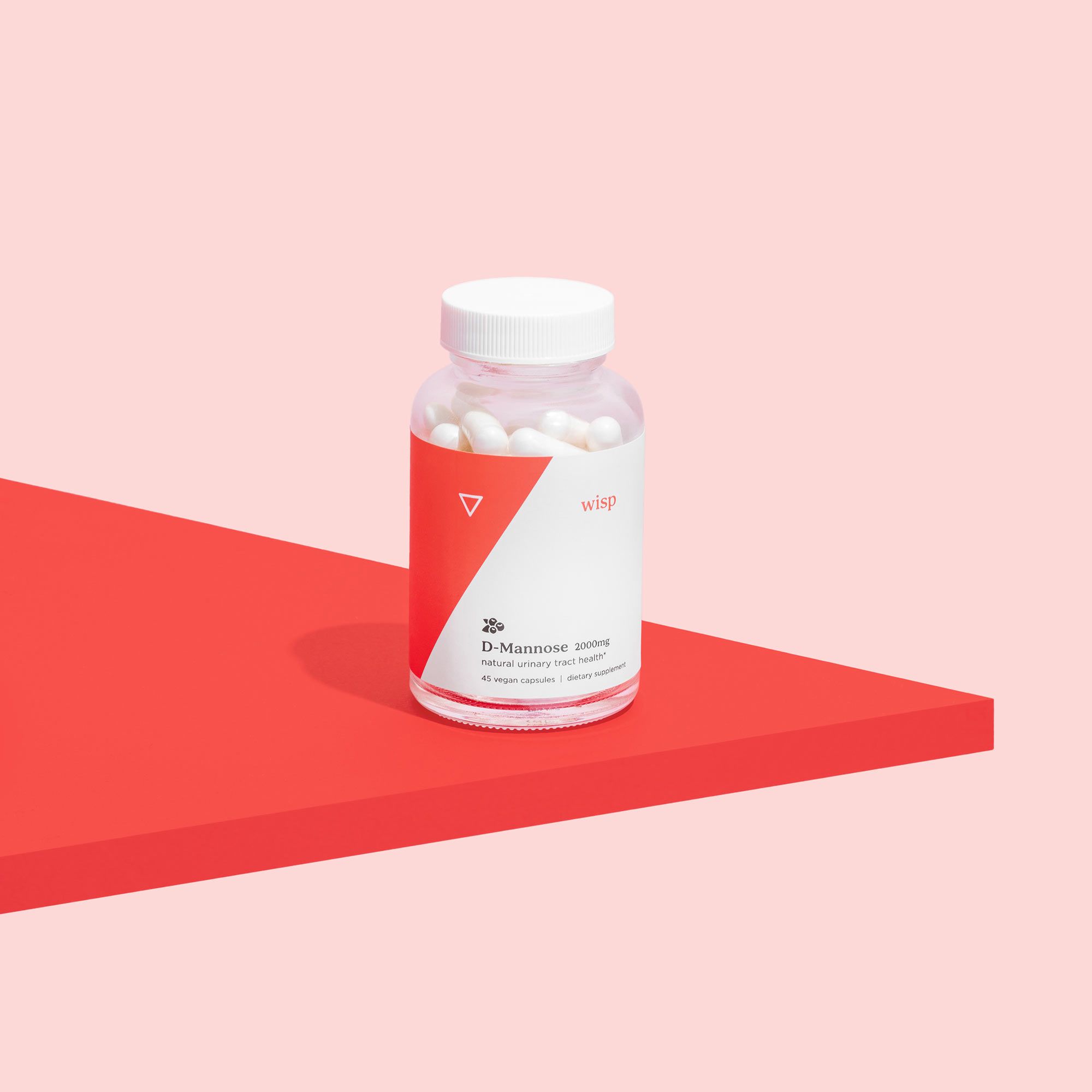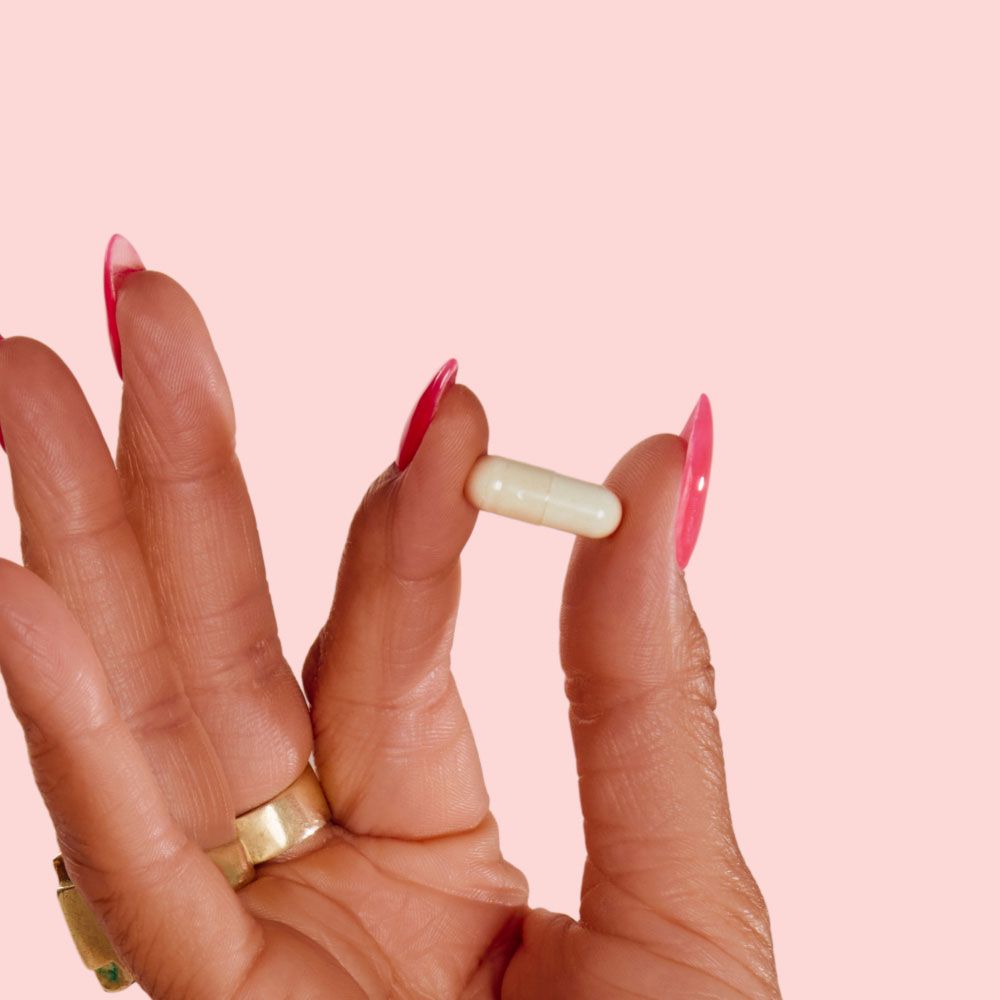
How to Improve Your
Vaginal Microbiome
By Simona Byler
July 1, 2024
Did you know that your vagina is home to almost 600 species of bacteria (1)? Don’t worry—they’re supposed to be there! Inside your vagina is a vast ecosystem containing billions of microorganisms that affect your health in all kinds of ways. You provide the warm, nutritious, and humid habitat, and the microorganisms keep out the bad bacteria and inflammation.
This ecosystem is called the vaginal microbiome—similar to the microbiomes found in your gut, mouth, and skin. Maintaining a healthy microbiome is essential to overall vaginal health and well-being. But, how exactly do you keep everything down there balanced? Read on, as we discuss how to test your vaginal microbiome and how you can keep your microbiome balanced and healthy.
What is the vaginal microbiome?
Maintaining a healthy vaginal microbiome is important to your overall health in incredible ways! But what is the vaginal microbiome, anyway? Also called the vaginal flora or vaginal microbiota, the vaginal microbiome is a complex community of microorganisms, including bacteria and fungi, that live in your vagina.
A healthy vaginal microbiome is dominated by a specific species of bacteria, called Lactobacillus or lactobacilli. Fun fact: a healthy vagina is acidic! Lactobacilli keep your vaginal environment acidic by producing lactic acid. This helps protect against harmful pathogens, keeps bad bacteria from growing, and can even fight against inflammation (2).
When your vaginal microbiome is unbalanced—like when you don’t have enough lactobacilli—you’re at risk of infections like bacterial vaginosis (BV), yeast infections, and sexually transmitted infections (STIs).
Your vaginal microbiome is a delicate and sensitive environment and plenty of normal-life things can disrupt it. Things like hormonal changes, the phases of your menstrual cycle, sexual activity, taking antibiotics, douching, diet, and even stress can affect your vaginal microbiome.
A ton of factors influence the balance of your vaginal flora, but don’t worry! Watching out for any sudden changes in your discharge or genital discomfort will help you know if your balance is off. We’ve got a load of vaginal health products available and vaginal microbiome tests can give you a thorough analysis of what’s up down there. 😘
How to test your vaginal microbiome
Your body’s microbiomes are super complex, and there is a ton we still don’t know about all the helpful bacteria in the vagina (thanks, gender health gap). But! Science is catching up, and vaginal microbiome tests can give you valuable insights into the health of your vaginal environment. So, let’s talk about how to test your vaginal microbiome–and why you should!
Here’s how you can test your vaginal microbiome:
Choose a test kit: There are a few different vaginal microbiome test kits you can take at home, but Wisp has teamed up with Daye to make it more convenient for you to get your own! Daye's At-Home Vaginal Microbiome Test uses a simple tampon to collect a more comprehensive sample and provide insights into your unique microbiome.
Collect a sample: We’ve all taken nasal swabs for COVID-19 tests–vaginal swabs follow the same idea but should be more comfortable! Some microbiome test kits use a sterile swab to collect a sample from the vaginal walls and others use a diagnostic tampon. Make sure to follow the test instructions for the most accurate results.
Send the sample to the lab: Once you've collected your sample, you'll package it according to the kit's instructions and send it to the lab for analysis. Analysis usually takes from five to ten days.
Receive and interpret results: After the lab analyzes your sample, you'll get a detailed report explaining the composition of your vaginal microbiome. The report can include information about the presence of beneficial Lactobacillus species, potentially harmful bacteria, and overall microbial diversity.
Microbiome test kits often show your results in an app for easier access, and some offer consultations with healthcare professionals. These consultations can help you interpret the results and develop a plan for improving your vaginal health.
So, should you test your vaginal microbiome? If you’ve noticed any abnormal discomfort or changes in discharge, yes! By testing your vaginal microbiome, you can find out about imbalances or disruptions to your flora—sooner rather than later. That knowledge can help you take action to restore and maintain a healthy vaginal environment, supporting your overall reproductive health.
Where can you get a microbiome test kit?
A great way to improve your vaginal microbiome is to understand it through testing. There are a few different vaginal microbiome test kits on the market, some available online and others in pharmacies. They range in price from about $70 to $150 per test, with some offering a subscription service for frequent testing. Depending on your preferences, you can also talk to your healthcare provider about in-office testing.
Vaginal microbiome and recurrent infections
Have you ever had an infection that just keeps coming back? 😵💫 If you have, you’re not alone, and it might be time to take a look at your microbiome! An imbalanced vaginal microbiome can lead to recurrent infections—sometimes with a bunch of un-fun symptoms and sometimes with no symptoms at all.
Common health issues caused by a disrupted microbiome – also called vaginal dysbiosis – are bacterial vaginosis (BV), yeast infections, and urinary tract infections (UTIs). Understanding the connection between your microbiome and these infections can help you take proactive steps to prevent and manage them.
Bacterial Vaginosis (BV)
BV is a super common vaginal condition, affecting over 30 percent of all reproductive-aged women at some point in their lives (3)! BV can happen when there's an overgrowth of harmful bacteria—and a decline in our BFF lactobacilli—that disrupts the balance of the vaginal microbiome.
Symptoms of BV include a fishy odor, grayish-white discharge, and itching or burning, but BV can also be asymptomatic! Factors contributing to BV include douching, using antibiotics, and condomless sex with new or multiple partners.
Annoying news: BV recurrence is common, even with standard antibiotic treatment (3). That’s why maintaining a healthy vaginal microbiome is so important! Boric acid suppositories have amazing antibacterial properties, making them a great way to prevent BV and keep it from coming back.
Wisp offers a number of BV treatment options and testing your vaginal microbiome can help you stay on top of your health.
Yeast Infections
Remember when we said your vaginal microbiome contains fungi? Well, yeast infections are caused by an overgrowth of Candida, a type of fungus. Possible yeast infection symptoms include a sour odor, itching or burning, and a clumpy, white discharge—kind of like cottage cheese.
Antibiotics are helpful when you have a bacterial infection, but they can throw off the balance of your vaginal microbiome–sometimes causing yeast infections. Taking probiotics, like Wisp Equalizing Probiotics, can help you keep your vaginal flora full of lactobacilli. Combine probiotics with boric acid to keep your vagina acidic and fight against those pesky recurrent yeast infections!
Plus, microbiome tests can help you determine whether what you’re experiencing is a yeast infection or something else.
Urinary tract infections (UTIs)
Did you know that women experience UTIs four times more frequently than men? And if your vaginal microbiome doesn’t have enough lactobacilli, UTI-causing bacteria can flourish (4). These bad bacteria can travel to your urethra and cause the pain and urge to pee we all know and definitely don’t love.
Besides BV, yeast infections, and UTIs, a disrupted vaginal microbiome can also increase your risk of STIs, lead to pelvic inflammatory disease, and complicate your fertility and pregnancy (4). That’s all the more reason to prioritize your vaginal health and test your vaginal microbiome if you’re concerned.
Maintaining a healthy vaginal microbiome
Maybe you’ve been dealing with annoying infections, or maybe you’re just eager to learn more–but either way, taking a vaginal microbiome test is a powerful way to take charge of your vaginal health.
Our other recommendations include avoiding douches, taking probiotics and boric acid, using condoms with new partners, eating a healthy diet, avoiding unnecessary antibiotics, sleeping seven to eight hours a night, and managing stress–all as best you can. And if you’re looking for treatment options, we’ve got you covered. At Wisp, we’re here to support you and the billions of microorganisms that call your vagina home. ❤️
Shop Wellness Essentials

Wisp Equalizing Probiotics
Starting at $18/ month
The Wisp Equalizing Probiotics is a daily supplement that contains 25 billion CFU’s of 9 powerhouse probiotic strains (more “good” bacteria!).

D-Mannose Capsules
Starting at $27
Skip the cranberry juice with D-Mannose capsules to support urinary tract health.

Boric Acid Suppositories
Starting at $27
An over-the-counter vaginal suppository custom-made to help prevent & relieve infections.

At-Home Vaginal Microbiome Screen by Daye
$125
Understand your vaginal microbiome balance and risk of infections using a non-invasive at-home tampon collection kit.


